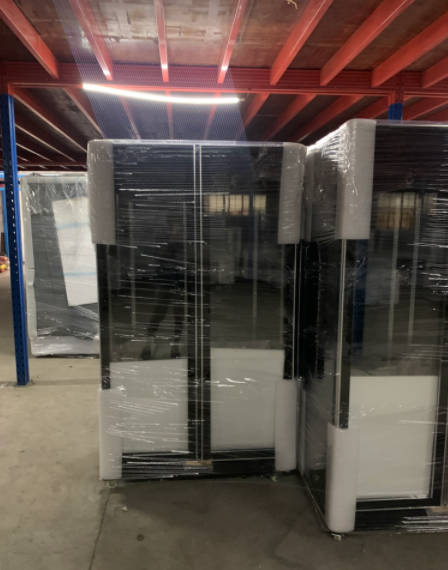In the wave of global trade, the export business of refrigeration equipment is becoming increasingly prosperous. However, for enterprises and practitioners engaged in the refrigeration equipment trade, accurately calculating export fees is a crucial link to ensure the smooth progress of trade, control costs, and achieve profitability. The calculation of export fees for refrigeration equipment trade is relatively complex and covers multiple aspects, which will be analyzed in detail below.

Transportation Fees
Transportation fees are an important part of the export fees for refrigeration equipment, mainly including the fees generated by different transportation methods such as sea freight, air freight, and land transportation.
Sea freight is the most commonly used transportation method for the export of refrigeration equipment due to its advantages of large transportation volume and low cost. Sea freight usually consists of basic freight and surcharges. The basic freight is calculated according to the weight ton (W) or measurement ton (M) of the goods. One weight ton is 1 metric ton of the gross weight of the goods, and one measurement ton is 1 cubic meter. The larger value of the two is taken as the chargeable ton. For example, if a batch of refrigeration equipment has a gross weight of 5 tons and a volume of 8 cubic meters, the basic freight will be calculated based on 8 measurement tons. There are various surcharges, such as bunker adjustment factor (BAF), port surcharge, peak season surcharge, etc., and these surcharges will vary according to market conditions and shipping routes.
Air freight is fast but costly, suitable for refrigeration equipment that is small in volume, light in weight, or urgently needs to be delivered. Air freight is generally calculated based on the higher value of the actual weight of the goods or the volumetric weight (volume divided by 6000 cubic centimeters/kg conversion). For example, if a piece of refrigeration equipment has an actual weight of 15 kg and a volume of 0.1 cubic meters (100,000 cubic centimeters), the volumetric weight is 100,000÷6000≈16.7 kg, and the air freight will be calculated based on 16.7 kg. In addition, there may be other fees such as fuel surcharge and security inspection fee.
Land transportation is mainly used for border trade or short - distance transportation connecting with sea freight or air freight. The fee calculation usually depends on factors such as transportation distance, cargo weight, and vehicle type, and the quotations of different transportation companies will also vary.
Customs Declaration and Clearance Fees
Customs declaration is a necessary process for goods to be declared to the customs when exporting. Enterprises need to pay the service fees of customs brokers, which are generally in the range of several hundred yuan. During the customs declaration process, if special documents are involved, such as export licenses, certificates of origin, etc., corresponding handling fees also need to be paid.
After the goods arrive in the destination country, customs clearance is required. Customs clearance fees include taxes such as tariffs, value - added tax, consumption tax, as well as the service fees of customs clearance agencies. The calculation of tariffs usually depends on the HS code of the goods and the tariff rate of the destination country, and the rate varies according to the type of goods and the policies of the destination country. Value - added tax and consumption tax are also calculated based on the dutiable value of the goods according to the tax rates stipulated by the destination country. The service fees of customs clearance agencies are determined according to the service content and the value of the goods.
Insurance Fees
In order to ensure the safety of goods during transportation, it is usually necessary to purchase cargo transportation insurance. Insurance fees are generally calculated as a certain percentage of the value of the goods. The premium rate varies according to factors such as transportation method, type of goods, and destination, generally around 0.1% - 0.3%. For example, for a batch of refrigeration equipment worth $100,000, if the insurance premium rate is 0.2%, the insurance fee is 100000×0.2% = $200.
Other Fees
In addition to the above - mentioned main fees, the export of refrigeration equipment trade may also incur packaging fees, warehousing fees, etc. Packaging fees are determined according to the size, weight, and packaging requirements of the refrigeration equipment. In order to ensure that the equipment is not damaged during transportation, special packaging materials and methods may be required, which will increase the packaging cost. Warehousing fees are the fees generated when the goods are temporarily stored in the warehouse before export or after arriving at the port of destination, and are calculated according to the storage time and the space occupied by the goods.
In addition, different trade terms (such as FOB, CIF, CFR, etc.) will also affect the assumption and calculation of export fees. For example, under FOB, the seller is responsible for all fees and risks before the goods are loaded onto the ship at the port of shipment, and the buyer bears the freight, insurance premium, etc. after the goods are loaded onto the ship; while under the CIF term, the seller needs to bear the freight, insurance premium, etc. to transport the goods to the port of destination.
In conclusion, the calculation of export fees for refrigeration equipment trade needs to comprehensively consider various factors such as transportation, customs declaration and clearance, insurance, packaging, and warehousing, and at the same time, it also needs to be combined with specific trade terms. When conducting export business, enterprises must carefully calculate various fees and formulate a reasonable pricing strategy to ensure the smooth progress of trade activities and their own economic benefits.